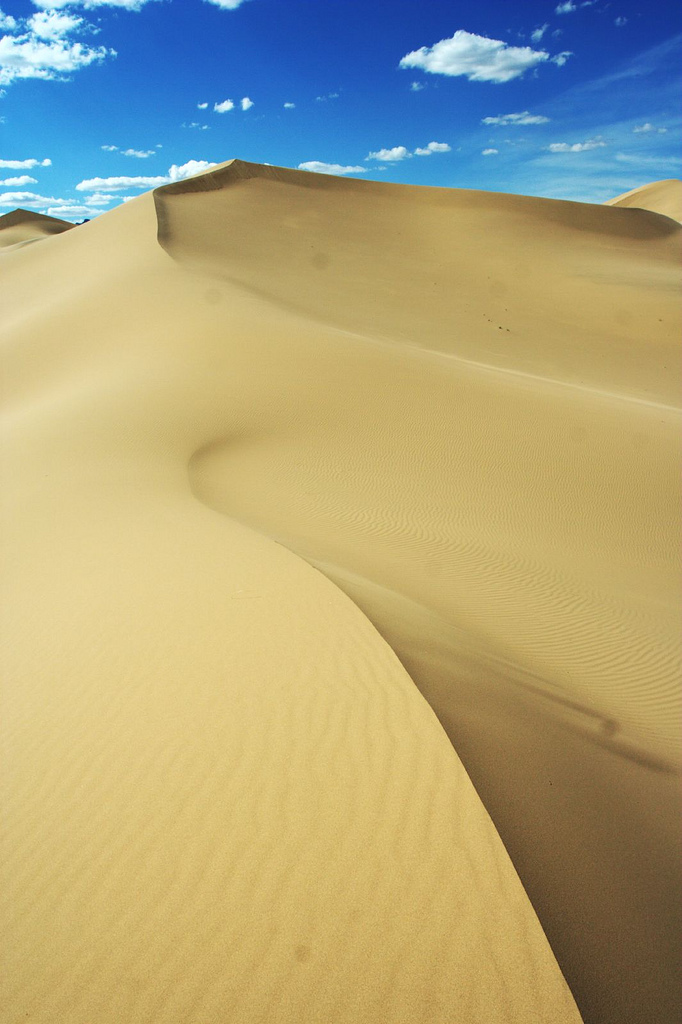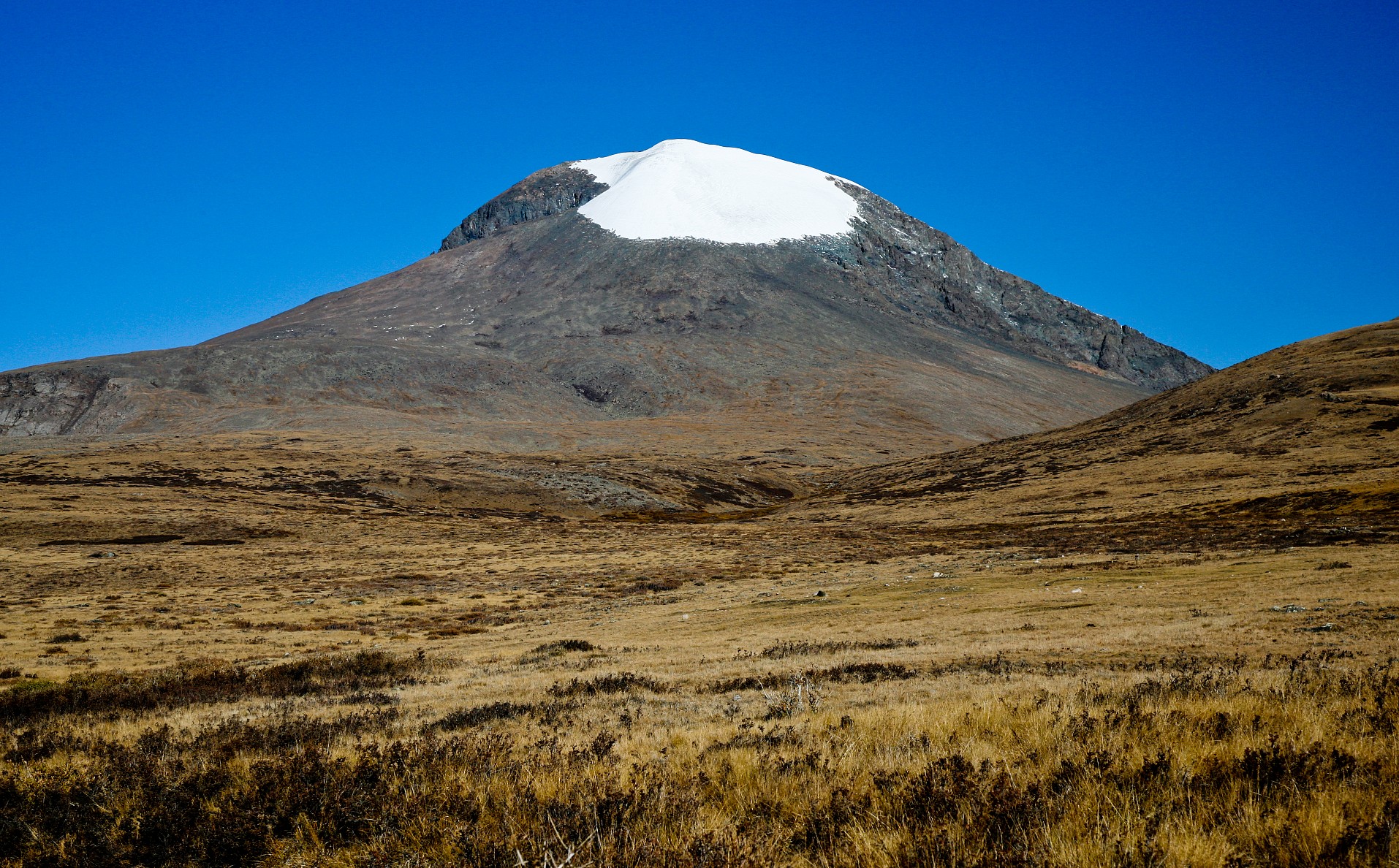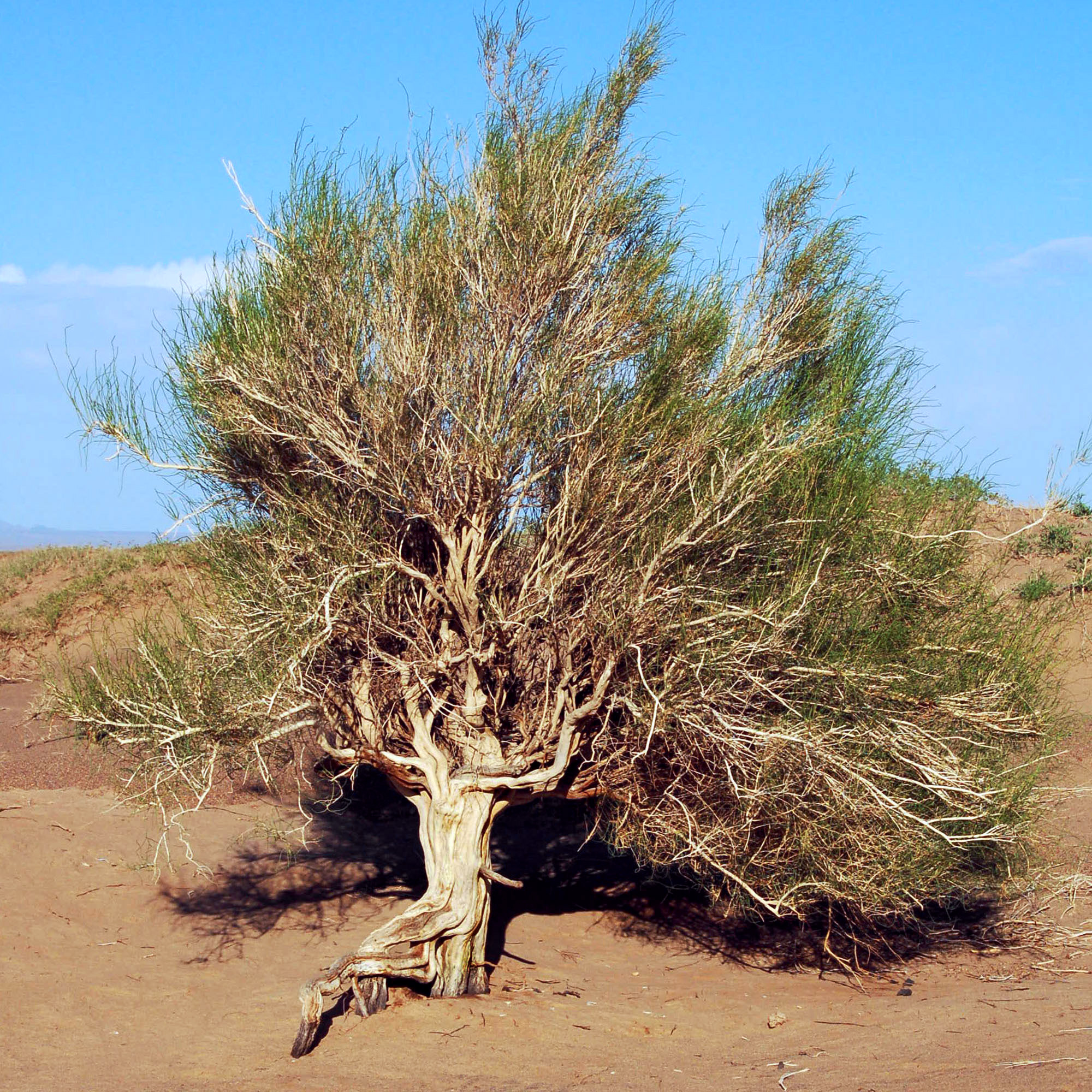Fauna Of Mongolia on:
[Wikipedia]
[Google]
[Amazon]

 The wildlife of Mongolia consists of flora, fauna and funga found in the harsh habitats dictated by the diverse climatic conditions found throughout the country. In the north, there are salty marshes and fresh-water sources. The centre has desert steppes. In the south, there are
The wildlife of Mongolia consists of flora, fauna and funga found in the harsh habitats dictated by the diverse climatic conditions found throughout the country. In the north, there are salty marshes and fresh-water sources. The centre has desert steppes. In the south, there are
 The drainage pattern is dictated by Asia's
The drainage pattern is dictated by Asia's
 Immediately after Mongolia attained independence in 1990, there was enthusiasm to declare 100 percent of the country as a national park. However, the goal was set at an achievable 30 percent. But due to economic conditions dictating development of mines, the achievement so far has been of the order of 13.8 percent covering an area of spread over 60 protected areas. There are four categories of protected areas, and these are: strictly protected areas (prohibiting hunting, logging and development with no human habitation as the defined areas are very fragile); the national parks, with their historical and educational interest providing for ecotourism in identified areas and with limited access to the local nomads for fishing and grazing; natural and historic monuments with restricted developmental activities; and nature reserves of less important regions providing protection to endangered and rare species of flora and fauna and archeological value with limited access for development within prescribed guidelines.
The strictly protected areas are Bogd Khan Uul Biosphere Reserve (established in 1966 covering including buffer and transition areas), Great Gobi Reserve (established as a reserve in 1975 and as a biosphere reserve in 1990 covering ), Uvs Nuur Basin Reserve (established 1997 and covering ),
Immediately after Mongolia attained independence in 1990, there was enthusiasm to declare 100 percent of the country as a national park. However, the goal was set at an achievable 30 percent. But due to economic conditions dictating development of mines, the achievement so far has been of the order of 13.8 percent covering an area of spread over 60 protected areas. There are four categories of protected areas, and these are: strictly protected areas (prohibiting hunting, logging and development with no human habitation as the defined areas are very fragile); the national parks, with their historical and educational interest providing for ecotourism in identified areas and with limited access to the local nomads for fishing and grazing; natural and historic monuments with restricted developmental activities; and nature reserves of less important regions providing protection to endangered and rare species of flora and fauna and archeological value with limited access for development within prescribed guidelines.
The strictly protected areas are Bogd Khan Uul Biosphere Reserve (established in 1966 covering including buffer and transition areas), Great Gobi Reserve (established as a reserve in 1975 and as a biosphere reserve in 1990 covering ), Uvs Nuur Basin Reserve (established 1997 and covering ),  * Khasagt Khayrkhan ()
* Khukh Serkhiin Nuruu ()
* Khan Khentii Uul ()
* Otgon Tenger Reserve ()
* Numrug ()
* Mongol Daguur Biosphere Reserve ()
;National parks
* Gobiin Gurvan Saykhan ()
* Khovsgul Nuur ()
* Khorgo Terkh Zagaan Nuur ()
* Gorkhi Terelj ()
*
* Khasagt Khayrkhan ()
* Khukh Serkhiin Nuruu ()
* Khan Khentii Uul ()
* Otgon Tenger Reserve ()
* Numrug ()
* Mongol Daguur Biosphere Reserve ()
;National parks
* Gobiin Gurvan Saykhan ()
* Khovsgul Nuur ()
* Khorgo Terkh Zagaan Nuur ()
* Gorkhi Terelj ()
*
 The flora in the wildlife area of Mongolia is of pasture lands in three-fourths of the country, which is the main source of feed for the large quantity of livestock. Forests and barren deserts cover the remaining area in the country. There are four vegetation zones. Coniferous forest form the taiga region of the northern areas with alpine noted at higher zones. In the mountain forest-steppe zone vegetation is dense on the northern slopes; Siberian larches (grows up to height),
The flora in the wildlife area of Mongolia is of pasture lands in three-fourths of the country, which is the main source of feed for the large quantity of livestock. Forests and barren deserts cover the remaining area in the country. There are four vegetation zones. Coniferous forest form the taiga region of the northern areas with alpine noted at higher zones. In the mountain forest-steppe zone vegetation is dense on the northern slopes; Siberian larches (grows up to height),

 The wildlife of Mongolia consists of flora, fauna and funga found in the harsh habitats dictated by the diverse climatic conditions found throughout the country. In the north, there are salty marshes and fresh-water sources. The centre has desert steppes. In the south, there are
The wildlife of Mongolia consists of flora, fauna and funga found in the harsh habitats dictated by the diverse climatic conditions found throughout the country. In the north, there are salty marshes and fresh-water sources. The centre has desert steppes. In the south, there are semi desert
A semi-arid climate, semi-desert climate, or steppe climate is a dry climate sub-type. It is located on regions that receive precipitation below potential evapotranspiration, but not as low as a desert climate. There are different kinds of semi-ar ...
s as well as the hot Gobi desert
The Gobi Desert (Chinese: µłłÕŻü (µ▓Öµ╝Ā), Mongolian: ąōąŠą▓čī (ßĀŁßĀŻßĀ¬ßĀó)) () is a large desert or brushland region in East Asia, and is the sixth largest desert in the world.
Geography
The Gobi measures from southwest to northeast an ...
in the south, the fifth-largest desert in the world.
About 90% of the landlocked country is covered by deserts or pastures with extreme climatic conditions. Fauna in the wild includes 139 mammal species, 448 bird species (331 of which are migratory and 119 are resident), 76 fish species, 22 reptile species and 6 amphibian species. Grassland and shrubland covers 55 percent of the country. In the steppe zone, forest covers only 6 percent while 36 percent is covered by desert vegetation, and only 1 percent is used for human habitation and agriculture. The vegetation in the eastern steppe region is grassland (the largest of its type in the world).
Geography
Topography
The country is bounded by Tibet,Afghan Turkestan
Afghan Turkestan, also known as Southern Turkestan,; tk, ┌»┘ł┘垦┘łž▒ž¬ž¦ ž¬ž▒┌®ž│ž¬ž¦┘å, G├╝norta T├╝rkistan, italics=no; uz, ž¼┘å┘łž©█ī ž¬ž▒┌®ž│ž¬ž¦┘å, Janubiy Turkiston is a region in northern Afghanistan, on the border with the former Sovi ...
, Siberia, and Northeast China. This has resulted in a faunal richness that combines the species from each of the border nations. Habitat distribution consists of grassland, shrubland and forest covering 55 percent of the country, while forest cover is 98 percent in the steppe zone, 36 percent is covered by desert vegetation.
Water resources
continental divide
A continental divide is a drainage divide on a continent such that the drainage basin on one side of the divide feeds into one ocean or sea, and the basin on the other side either feeds into a different ocean or sea, or else is endorheic, not ...
. This separates areas that drain to the Arctic Ocean from those that drain northeast into the Pacific. The Khangai Mountains
The Khangai Mountains ( mn, ąźą░ąĮą│ą░ą╣ąĮ ąĮčāčĆčāčā, Hangain nuruu, ); form a mountain range, range in central Mongolia, some west of Ulaanbaatar.
Name
Two provinces of Mongolia are named after the Khangai mountains: Arkhangai (North Khangai) ...
form another divide between areas that drain into the oceans and those that drain inland. In the western and southern zones, streams flow seasonally into salt water lakes without outlets. Rivers of the northern region are perennial, rising from the mountains. The two major river systems are the Orkhon River
The Orkhon River (; mn, ą×čĆčģąŠąĮ ą│ąŠą╗, ''Orkhon gol'', Old Chinese: Õ«ēõŠ»µ░┤ ''(*arhoushui)'') is a river in Mongolia.
The Orkhon river derives its name from the Old Turkic prefix "or" meaning "middle", and "khan" or king.
It rises in ...
(Mongolia's longest inland river within the country, which joins the Selenge River) and the Selenge River (Selenga in Russian). Lakes in the country are mostly saline. The largest by volume is freshwater Lake Kh├Čvsg├Čl, a natural lake formed in a structural depression. It is the second oldest lake in the world and accounts for 65 percent of the fresh water of Mongolia (2 percent of that in the world).
Climate
The climatic conditions dictated by the oceans on one side and the snow-capped mountains (average peak elevation of in high northern latitudes) on the other side, have a significant bearing on the wildlife distribution in the country. The climate patterns are: continental climate with very cold conditions (anticyclones are formed here over Siberia) and cool to hot summers in the deserts and semi deserts. Temperature records indicate a very wide variation between winter and summer, of the order of on average in the northern part of the country, and even on a single day the variation can be as much as . In the Ulaanbaatar area the typical variation reported is in January and in July while in the Gobi desert area, the average temperature reported for January is and in July.Precipitation
Rainfall and snow are also very uneven, dependent on elevation and latitude. Annual amounts range from low-lying desert areas of the south and west where it is less than to northern mountainous areas, where it is reported as about , while at Ulaanbaatar the reported annual rainfall is . The number of days the sky remains clear and sunny is between 220 and 260 annually. Fierce blizzards occur in the mountain regions and the steppes. During this period a thin layer of snow totally stops grazing in these pastures.Legal protection
Commercial exploitation increased between the seventeenth and twentieth centuries, necessitating increased legislation. Two laws were enacted in 1995, the Mongolian Law on Environmental Protection and the Mongolian Law on Hunting. Thesteppe
In physical geography, a steppe () is an ecoregion characterized by grassland plains without trees apart from those near rivers and lakes.
Steppe biomes may include:
* the montane grasslands and shrublands biome
* the temperate grasslands, ...
habitat for Mongolian gazelle (''Procapra gutturosa''), an area of , is reported to be the "largest remaining example of a temperate grassland ecosystem".
Protected areas
Dornod Mongol Biosphere Reserve
Mongol Daguur Biosphere Reserve is a nature reserve in the Dornod Aimag (Province) in eastern Mongolia, preserved as an example of one of the largest areas of intact grassland in the world. It covers and was designated as a UNESCO Biosphere Res ...
(designated in 2005 and covering ) and Khustain Nuuru Reserve (established in 2003 covering ). They are all under the UNESCO Man and the Biosphere Programme.
Some of the other protected are:
;Strictly protected areas
 * Khasagt Khayrkhan ()
* Khukh Serkhiin Nuruu ()
* Khan Khentii Uul ()
* Otgon Tenger Reserve ()
* Numrug ()
* Mongol Daguur Biosphere Reserve ()
;National parks
* Gobiin Gurvan Saykhan ()
* Khovsgul Nuur ()
* Khorgo Terkh Zagaan Nuur ()
* Gorkhi Terelj ()
*
* Khasagt Khayrkhan ()
* Khukh Serkhiin Nuruu ()
* Khan Khentii Uul ()
* Otgon Tenger Reserve ()
* Numrug ()
* Mongol Daguur Biosphere Reserve ()
;National parks
* Gobiin Gurvan Saykhan ()
* Khovsgul Nuur ()
* Khorgo Terkh Zagaan Nuur ()
* Gorkhi Terelj ()
* Altai Tavan Bogd National Park
Altai Tavan Bogd National Park (, ''Altai five saints nature complex'') is a national park in Bayan-Ûlgii Province of western Mongolia. The park includes the Mongolian side of the Tavan Bogd massif, which is divided by the triple border with Rus ...
* Tsambagarav Uul National Park
Tsambagarav National Park (also: Cambagarav Mountain) is a national park in Bayan-Ûlgii Province of western Mongolia.
It covers more than in a glacial region which includes Tsambagarav mountain of Mongolia. It has a notable population of snow ...
* Khustain Nuruu National Park
* Lake Kh├Čvsg├Čl National Park
* Southern Altai Gobi National Park
;National reserves
* Ugtam Uul ()
* Lkhachinvandad Uul ()
* Bulgan Gol Bulgan may refer to:
;in Mongolia
* Bulgan Province, a province (aimag) of Mongolia
* Bulgan (city), the capital of the Bulgan province
* Bulgan Airport, the airport of Bulgan city
* Bulgan Gol, a upstream river of Ulungur River
* several district ...
()
* Sharga and Mankhan ()
* Khustain Nuruu ()
* Nagalkhan Uul ()
* Batkhan Uul
* Gun-Galuut Nature Reserve
Gun-Galuut Nature Reserve, south-east of Ulaanbaatar, has a great diversity of ecosystems even though it has a comparatively small area. The complex of high mountains, steppes, rivers, lakes and wetlands are kept in their original condition. Visi ...
;National monuments
* Eej Khairkhan ()
* Bulgan Uul ()
* Togoo Tulga Uul ()
* Naiman Nuur ()
* Ganga Nuur ()
Flora
 The flora in the wildlife area of Mongolia is of pasture lands in three-fourths of the country, which is the main source of feed for the large quantity of livestock. Forests and barren deserts cover the remaining area in the country. There are four vegetation zones. Coniferous forest form the taiga region of the northern areas with alpine noted at higher zones. In the mountain forest-steppe zone vegetation is dense on the northern slopes; Siberian larches (grows up to height),
The flora in the wildlife area of Mongolia is of pasture lands in three-fourths of the country, which is the main source of feed for the large quantity of livestock. Forests and barren deserts cover the remaining area in the country. There are four vegetation zones. Coniferous forest form the taiga region of the northern areas with alpine noted at higher zones. In the mountain forest-steppe zone vegetation is dense on the northern slopes; Siberian larches (grows up to height), Siberian cedar
''Pinus sibirica'', or Siberian pine, in the family Pinaceae is a species of pine tree that occurs in Siberia from 58┬░E in the Ural Mountains east to 126┬░E in the Stanovoy Range in southern Sakha Republic, and from Igarka at 68┬░N in the lowe ...
s, interspersed with spruce
A spruce is a tree of the genus ''Picea'' (), a genus of about 35 species of coniferous evergreen trees in the family Pinaceae, found in the northern temperate and boreal (taiga) regions of the Earth. ''Picea'' is the sole genus in the subfami ...
s, pines (Siberian and Scotch pines), and fir
Firs (''Abies'') are a genus of 48ŌĆō56 species of evergreen coniferous trees in the family (biology), family Pinaceae. They are found on mountains throughout much of North America, North and Central America, Europe, Asia, and North Africa. The ...
s along with deciduous vegetation of white and brown birches, aspens
Aspen is a common name for certain tree species; some, but not all, are classified by botanists in the section ''Populus'', of the ''Populus'' genus.
Species
These species are called aspens:
*''Populus adenopoda'' ŌĆō Chinese aspen (China, ...
, and poplars
''Populus'' is a genus of 25ŌĆō30 species of deciduous flowering plants in the family Salicaceae, native to most of the Northern Hemisphere. English names variously applied to different species include poplar (), aspen, and cottonwood.
The we ...
are noted to dominate the area. The inter-montane basins, wide river valleys and the southern slopes of the mountains have steppe vegetation. Pastureland have a cover of feather grass Feathergrass is a common name for several plants and may refer to:
*'' Nassella'', a genus of bunchgrasses
*'' Stipa'', a genus of perennial hermaphroditic grasses
{{Short pages monitor